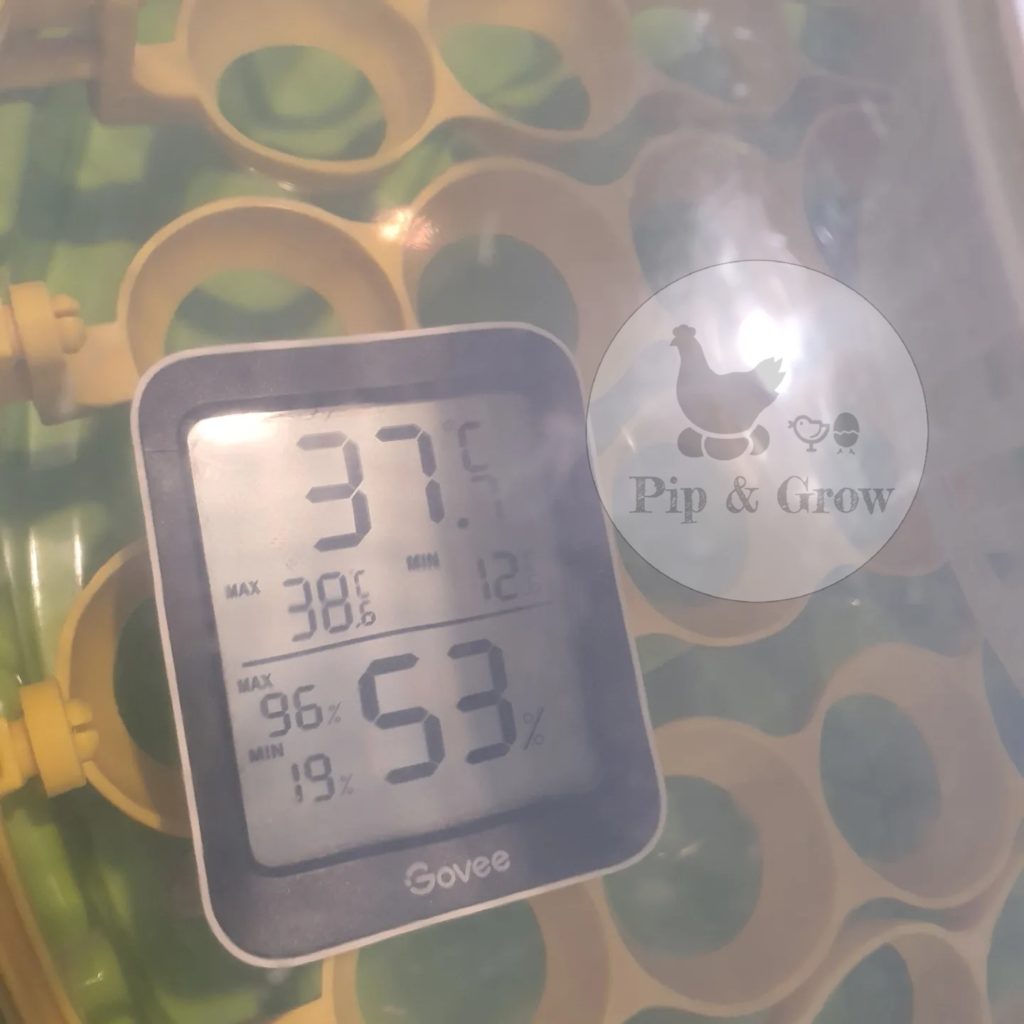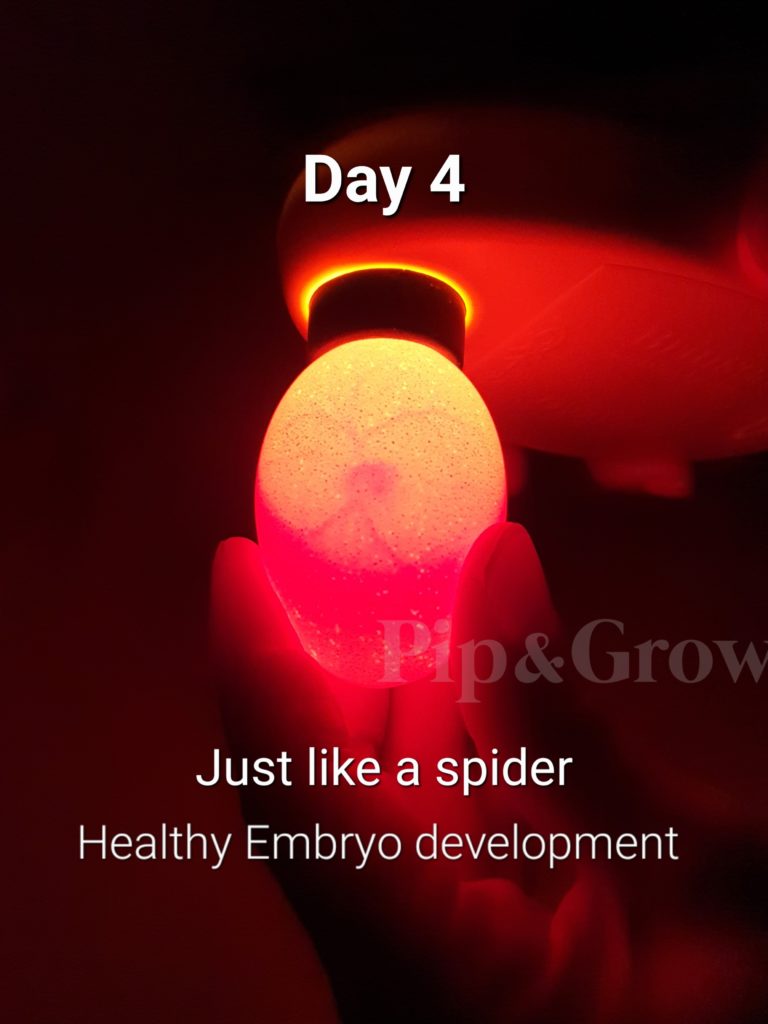Hatching Tips
Using an Incubator

– “No Resting”: Air cell damage occurs when there is a tear between the two membranes of the egg, often caused by vibrations, drops, and other factors during transport. This type of damage cannot be repaired by allowing the eggs to rest. Instead, leaving them to rest may further age the eggs and reduce their viability. Therefore, it is advisable to incubate the eggs as soon as possible to maximize their chance of hatching successfully. Related Post : Is “Resting” fertile eggs necessary?
– The development of the embryo within the fertilized egg begins from the instant the egg enters the incubator, not from the day the eggs were laid.
– The day the eggs enter the incubator is considered day 0 of incubation, not day 1.
– Never rely solely on your incubator’s temperature and humidity display. It’s essential to use a separate thermometer and hygrometer for accuracy. Before starting the hatch, especially with a new incubator, verify the temperature using a reliable independent thermometer and hygrometer placed inside the incubator to identify any hot or cold spots. Even a slight deviation of 1-2 degrees Celsius can significantly impact the out come. Read more.
– Google and YouTube serve as valuable resources for learning about egg incubation and chick rearing. It’s essential to conduct thorough research and familiarize yourself with terms such as “turning eggs,” “pointy/round ends,” “lockdown,” and more. Take the time to understand the process and prepare adequately for successful hatching and chick care.

– Temperature : 37.5-37.9°C
– Humidity : Between 30-40% are generally recommended during this stage.
However, this can vary based on factors such as the type of incubator used (e.g., Brinsea OvaEasy Cabinet, Greatlander Offspring), altitude, location, and climate. We adjust the humidity levels according to these variables, especially considering seasonal changes. Some people opt for “dry hatching,” where no water is added during days 1-17 of the incubation period, while others prefer to maintain traditional humidity levels throughout. It’s important to view the process as a learning experience; if one method doesn’t yield the desired results, try experimenting with different approaches to find what works best for your specific conditions and equipment. Getting to know your incubator and making adjustments based on your observations and learning is key, as there’s no one-size-fits-all solution.
– Eggs must be turned at least two times a day either manually or using an available auto-turning mechanism until day 18.
– Day 7-10 : “CANDLE YOUR EGGS” to look for signs of development such as veins, a black dot, or other indications of life. Dispose of any eggs that remain clear. If you have concerns about the fertility of the eggs, this is the best time to contact the seller with photo or video evidence and seek advice..
Most sellers have a “No Responsibility” policy once eggs leave their hands, as there are many factors that are beyond the seller’s control. (Click to view) While some may offer replacements as a goodwill gesture, this is entirely at their discretion. At Pip & Grow, we offer compensation if total viability falls below 50%. Please refer to “Viability Matters” for more details.
– Days 12 – 15 : conduct a second candling. Observe movement, along with well-developed veins and almost half-filled eggs. Dispose of any non-viable eggs, known as “quitters,”.

– It is crucial to maintain the air cell in its proper position, ideally at the rounded end of the egg. The best way to achieve this is by incubating the eggs in an upright position whenever possible. Placing the eggs horizontally (Pointy end down), significantly decreases the likelihood of survival for eggs with air cell damage. Therefore, upright incubation is recommended to maximize the chances of successful hatching.
– It is recommended to avoid using sideways rolling incubators like the Janoel 24 for shipped eggs with air cell damage, if possible. In these types of incubators, the damaged air cell may struggle to remain in its proper position (at the round end) as the eggs are incubated horizontally. This can cause further damage as the air bubble tries to float to the highest position while rolling. Instead, we suggest using plastic egg trays and manual turning by gently”tilting” the eggs from one side to the other, either right or left each time. This method ensures that the air cell remains at the top (round end), minimize the risk of additional damage to the air cell and improve the chances of a successful outcome.

Day 18/19 to End of Hatching :”Lock Down”
– Temperature : 37.0 -37.5°C
– Humidity : Between 60-65% are MUST during this stage.
– Day 18 : it’s time to stop turning the eggs. Remove the auto-turning trays or baskets from the incubator. Perform a final candling before lockdown and discard any eggs that appear cloudy or have floating or liquid contents inside.
– LOCKDOWN : Increase the humidity by adding water, then close the incubator and refrain from opening it until all the eggs have hatched or, at the latest, by Day 22 or 23. This process is commonly known as “Lockdown.”

“Lockdown” is a crucial stage in the incubation process where humidity is increased to facilitate easier hatching for the chicks. This mimics the natural conditions provided by mother hens, who naturally increase humidity with their body temperature and skin oils. The higher humidity softens the eggshells and thin membrane inside, aiding in the hatching process.
During lockdown, it’s essential to avoid opening the incubator unnecessarily. Even a brief opening can cause the thin membrane to shrink, a phenomenon known as “shrink wrapping.” This can lead to the death of unhatched or nearly hatched chicks. While some may argue for quick, two-second openings without issues, there’s no need to take this risk.
In cases where a chick may seem to need assistance hatching, it’s generally best to allow it to hatch on its own. Intervening could potentially harm the chick or disrupt the natural hatching process. While assisting a struggling chick may seem compassionate, it’s important to consider the risks to the other healthy eggs in the batch. Our experience has shown that it’s not worth jeopardizing the well-being of the entire hatch for the sake of one chick.
– Chicks are equipped to go without water and food for 48 to 72 hours inside the incubator. Therefore, there is no need to open the incubator and remove the chicks while others are still hatching. During this time, they utilize the nutrients they absorbed prior to hatching. It’s actually beneficial for them to remain inside the incubator during this period, as it allows them to fully dry and recuperate before being moved to the brooder.
– Once the chicks are dry, transfer them directly to the brooder. They typically won’t eat or drink on the first day and may spend most of their time sleeping. Ensure they stay warm and check for any common issues such as splayed leg, slipped tendon, wry neck, or curled toe. Google and YouTube can be valuable resources for addressing these problems. Within a day or two, the chicks should be up and running around in the brooder.
– Please see Dayold Care Tips for more info.




Great resources to draw from your knowledge and experience! So, should the egg be placed in the holder pointy end down or pointy end up?
Egg should be incubated either side way rolling or pointy end down, never pointy end up.